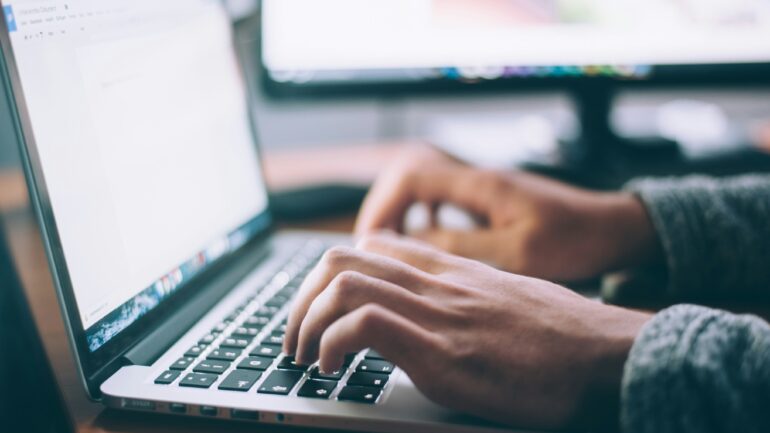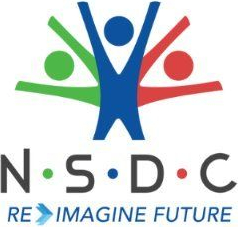The Future of Work: How AI is Redefining Rolesand Creating Opportunities

Companies that embrace AI are seeing seismic changes in three key areas: continuous enterprise reinvention, real-time intelligence, and the synthesis of multiple data types. More than efficiency, this shift is all about reinvention
Picture this: Ashima, a mid-level marketing manager at a global consumer goods company, walks into her Monday morning meeting armed not just with last week’s sales data, but with real-time insights generated by an AI system. The AI has analysed social media trends, competitor pricing shifts, and even weather patterns to predict a spike in demand for one of her products. By the time she’s finished her coffee, Ashima has already adjusted her campaign strategy, targeting specific customer segments with personalised offers. A year ago, this would have taken her team days. Today, it takes minutes.
This is the future of work with AI – a world where employees like Ashima aren’t replaced by machines but empowered by them. As Harvard Business Review (HBR) puts it, “AI is not just about automation; it’s about augmentation.” The AI revolution is transforming how we work, enabling employees to focus on creativity, strategy, and decision-making while leaving the heavy lifting of data crunching to machines.
But this shift isn’t just about efficiency. It’s about reinvention. Companies that embrace AI are seeing seismic changes in three key areas: continuous enterprise reinvention, real-time intelligence, and the synthesis of multiple data types. These advancements are not just reshaping industries–they’re redefining the very nature of work itself.
Continuous Reinvention: No More Waiting for the Next Big Upgrade
Gone are the days of waiting for annual software updates or multi-year transformation programs. AI enables companies to adapt dynamically, responding to market shifts in real time. Take Netflix, for example. What started as a DVD rental service in 1997 has reinvented itself multiple times, thanks in large part to AI. Today, Netflix uses AI to personalise everything from thumbnail images to content recommendations, ensuring that each of its 280 million subscribers gets a unique experience. As HBR notes, “AI-driven reinvention isn’t a one-time event–it’s a continuous process.”
For employees, this means the end of static roles. Ashima, our marketing manager, no longer relies on quarterly reports to make decisions. Instead, she uses AI to continuously refine her strategies, staying ahead of competitors and meeting customer needs faster than ever before.
Real-Time Intelligence: The End of “Wait and See”
Traditional business intelligence systems operated on a delay–quarterly reports, monthly updates, or even daily summaries. AI changes the game by providing real-time insights. TikTok, for instance, uses AI to analyse user behaviour instantly, updating its “For You” page to keep users engaged for an average of 34 hours per month. This real-time intelligence isn’t just for social media; it’s transforming industries from retail to healthcare.
For workers, this means faster decision-making and greater agility. Imagine a supply chain manager who can predict disruptions before they happen or a sales executive who can adjust pricing strategies on the fly. As HBR puts it, “Real-time intelligence isn’t just a competitive advantage–it’s a survival tool.”
Multimodal AI: Seeing the Bigger Picture
The digital era was all about bits and bytes. The AI revolution is about synthesising multiple types of data–text, images, audio, and more–to create a richer understanding of the world. In retail, companies are using multimodal AI to enhance customer experiences, from AI-powered chatbots that handle complex queries to smart carts that monitor inventory in real time. In healthcare, AI is accelerating personalised medicine by analysing everything from genomic data to electronic health records.
For employees, this means new opportunities to collaborate with AI. Ashima, for example, might use AI to analyse customer sentiment from social media posts, video reviews, and call centre transcripts, giving her a 360-degree view of her audience.
The New Chapter of Work
As AI continues to evolve, so too must the workforce. Employees who embrace lifelong learning, adaptability, and creativity will thrive in this new era. Companies, meanwhile, must invest in training and foster a culture of innovation to stay ahead.
The AI revolution isn’t just changing how we work–it’s creating a world of opportunity for those ready to adapt. As HBR aptly states, “The future of work isn’t about humans versus machines. It’s about humans and machines working together to achieve what neither could do alone.” For Ashima and millions like her, that future is already here.
Netflix and Amazon are oft repeated examples, use newer examples to illustrate the point
The Future of Work: How AI is Redefining Roles–and Creating Opportunities
Imagine this: Carlos, a production manager at a cutting-edge automotive plant, starts his day by checking a dashboard powered by AI. Overnight, the system has analysed thousands of data points–machine vibrations, temperature fluctuations, and even audio signals from the assembly line–to predict a potential equipment failure. By the time Carlos sips his first coffee, he’s already dispatched a maintenance team to address the issue before it causes downtime. A year ago, this kind of proactive intervention would have been science fiction. Today, it’s just another Monday.
This is the future of work with AI, a world where employees like Carlos aren’t replaced by machines but elevated by them. As Harvard Business Review (HBR) puts it, “AI is not just about automation; it’s about augmentation.” The AI revolution is transforming how we work, enabling employees to focus on creativity, strategy, and decision-making while leaving the heavy lifting of data crunching to machines.
But this shift isn’t just about efficiency. It’s about reinvention. Companies that embrace AI are seeing seismic changes in three key areas: continuous enterprise reinvention, real-time intelligence, and the synthesis of multiple data types. These advancements are not just reshaping industries, they’re redefining the very nature of work itself.
Continuous Reinvention: No More Waiting for the Next Big Upgrade
Gone are the days of waiting for annual software updates or multi-year transformation programs. AI enables companies to adapt dynamically, responding to market shifts in real time. Take Stitch Fix, the online personal styling service, for example. Stitch Fix uses AI to continuously refine its recommendations, analysing customer feedback, fashion trends, and even weather patterns to curate personalised clothing boxes. The company’s algorithms learn from every interaction, ensuring that its offerings evolve with its customers’ tastes. As HBR notes, “AI-driven reinvention isn’t a one-time event–it’s a continuous process.”
For employees, this means the end of static roles. Carlos, our production manager, no longer relies on monthly maintenance schedules. Instead, he uses AI to continuously monitor and optimise his factory’s operations, staying ahead of potential issues and improving efficiency.
Real-Time Intelligence: The End of “Wait and See”
Traditional business intelligence systems operated on a delay–quarterly reports, monthly updates, or even daily summaries. AI changes the game by providing real-time insights. Zara, the global fashion retailer, uses AI to analyse customer behaviour in real time, from in-store purchases to online browsing patterns. This allows Zara to adjust its inventory and production schedules on the fly, ensuring that popular items are restocked quickly, and unpopular ones are phased out.
For workers, this means faster decision-making and greater agility. Imagine a store manager who can instantly identify which products are trending or a designer who can tweak a collection based on real-time feedback. As HBR puts it, “Real-time intelligence isn’t just a competitive advantage, it’s a survival tool.”
Multimodal AI: Seeing the Bigger Picture
The digital era was all about bits and bytes. The AI revolution is about synthesising multiple types of data–text, images, audio, and more–to create a richer understanding of the world. In healthcare, PathAI is using multimodal AI to revolutionise pathology. By analysing medical images, patient records, and genomic data, PathAI’s algorithms help pathologists diagnose diseases like cancer more accurately and efficiently. This isn’t just about speed; it’s about combining human expertise with machine precision to deliver better patient outcomes.
For employees, this means new opportunities to collaborate with AI. Carlos, for example, might use AI to analyse audio signals from machinery, visual data from production lines, and sensor inputs to predict equipment failures before they happen.
The New Chapter of Work
As AI continues to evolve, so too must the workforce. Employees who embrace lifelong learning, adaptability, and creativity will thrive in this new era. Companies, meanwhile, must invest in training and foster a culture of innovation to stay ahead. The AI revolution isn’t just changing how we work–it’s creating a world of opportunity for those ready to adapt. As HBR aptly states, “The future of work isn’t about humans versus machines. It’s about humans and machines working together to achieve what neither could do alone.” For Carlos and millions like him, that future is already here.


